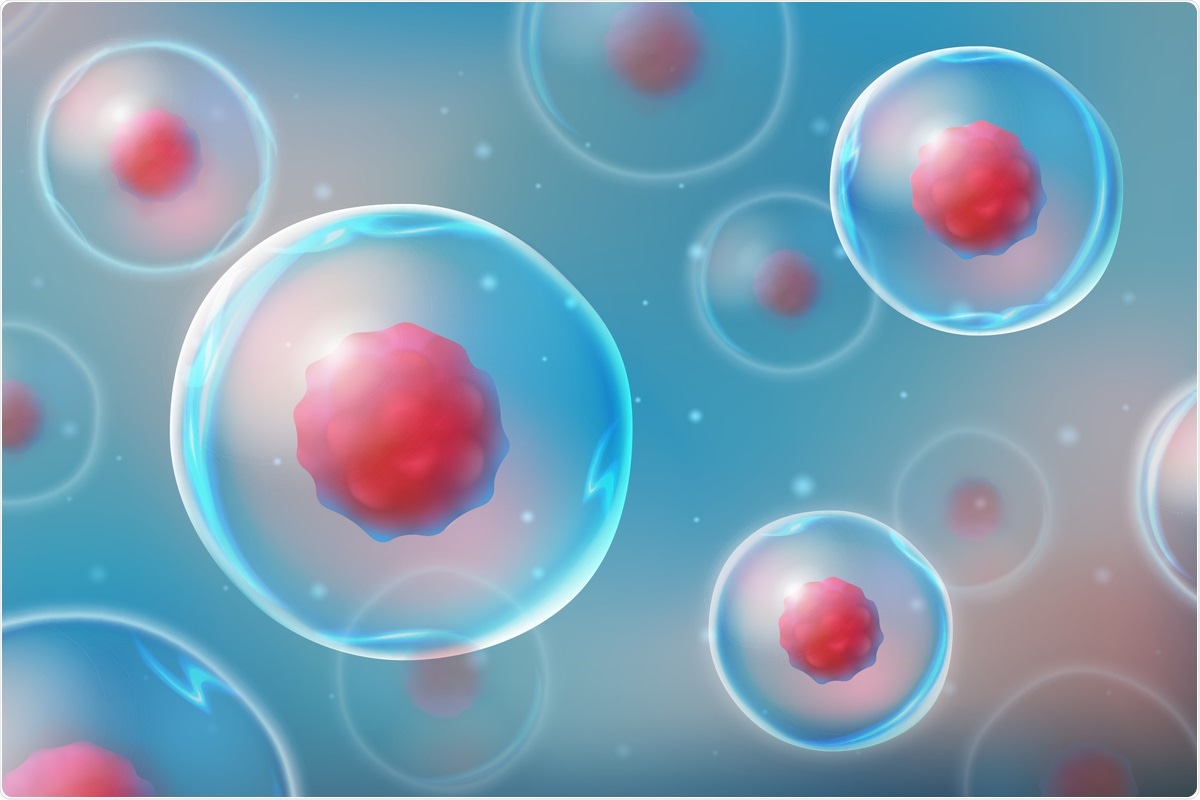Cells rarely change their genetic material in response to extracellular events, which can make it difficult to examine past circumstances of a cell’s life. In a recent study published on the preprint server bioRxiv*, researchers from the California Institute of Technology have created a system that allows scientists to ‘log’ a cell’s reactions to external stimuli within the cell’s genetic material.
 Study: Proof of concept continuous event logging in living cells. Image Credit: MarySan / Shutterstock.com
Study: Proof of concept continuous event logging in living cells. Image Credit: MarySan / Shutterstock.com

 *Important notice: bioRxiv publishes preliminary scientific reports that are not peer-reviewed and, therefore, should not be regarded as conclusive, guide clinical practice/health-related behavior, or treated as established information.
*Important notice: bioRxiv publishes preliminary scientific reports that are not peer-reviewed and, therefore, should not be regarded as conclusive, guide clinical practice/health-related behavior, or treated as established information.
About the study
Serine integrases catalyze recombination reactions between attP/B sites, converting them into attL and attR sites that do not react. Repeated integration into the same site is only possible if a data plasmid contains both attP and B sites that can replace the destroyed attB site.
Unfortunately, intramolecular attachment sites recombine very efficiently, thus leading to data plasmids being consumed quicker than they can be integrated into the genome. To counteract this, the researchers placed parallel attachment sites close to the attB/P sequences, thereby decreasing the rate of recombination.
The scientists then constructed an event logger system consisting of a single data plasmid and tetracycline-inducible Bxb1 integrase as a proof of concept. The integrase successfully catalyzed genome integration and the multimerization of the data plasmid in vivo, remaining proportional to the strength of the inducer pulse.
One hour of induction generated varying levels of integration; however, when Tc concentration reached 32-64 nanomolar (nM), nearly all data plasmids were completely integrated. The population of these data plasmids could be controlled using integrase attachment sites in translational fusion with chloramphenicol resistance.
Data plasmids could not produce a functional antibiotic resistance gene; therefore, the cells were forced to maintain a population of un-recombined data plasmids. Unfortunately, following an additional 12-hour culturing of cells, data plasmid numbers did not drop.
Entire plasmids were integrated into the genome, resulting in multiple function replication origins present in the genome. Cells with different numbers of genome integrated plasmids could not be isolated.
To allow recording of the chronological order and duration events, the integrase must select between identical attachment sites to integrate different data plasmids. The researchers used catalytically inactive Clustered regularly interspaced short palindromic repeats (CRISPR)-Cas9 to prevent the integrase from binding to specific attachment sites, with plasmids preferentially integrating at certain sites.
The scientists also tried activating ribonucleic acid RNA and dCas9 production before the integrase to determine whether pre-assembled guide RNA complexes were better at blocking integrase. To this end, the researchers found that they could increase the strength of the site selection effect two-fold.
An oxford nanopore MinION sequence was used to check polymerase chain reaction (PCR) products made from genome sites with integrated data plasmids in order to check the feasibility of sequencing as a readout for the memory array. The first data plasmid tested had chloramphenicol resistance, which was designed to be abolished once integrated, thus encouraging the persistence of the plasmid following integration.
Sequencing showed this was successful; however, the plasmid retained functional origins that likely boosted genome replication excessively. To alleviate the potential instability this causes, a second data plasmid was constructed using an origin-less Cole1 origin so that it could not replicate.
An exogenous promoter is provided upstream, flanked by integrase sites. When this plasmid is integrated into the genome, the exogenous promoter is separated from the promoter-less origin, producing an array of non-functional origins, thus preventing over-replication.
Once the integration has occurred cells, no longer need to maintain data plasmids, although plasmid copy number is greatly increased. The scientists then identified the most effective guide RNA location that could result in the best blocking while providing many base pairs of orthogonality, eventually choosing an attP site next to RFP.
A second data plasmid was introduced into the system to record the history of two events. The two guide RNAs of oG1 and oG2 were used to repress the integration of one of the two plasmids each. Whereas oG1 represses the plasmid containing BC2, oG2 does so for BC1. This way, when G1 is expressed, more BC1 shall be integrated.
Following induction of the expression of dCas9 and a guideRNA for an hour, integrase was expressed. Once the genome arrays were sequenced, the read compositions were as expected, with G1 reducing the number of reads carrying BC2 and vice versa.
Conclusions
The authors have developed a system that allows the recording of stimuli in a bacterium’s DNA by allowing the bacteria to choose between which plasmids to integrate, depending on which stimuli are perceived. While this is currently a proof-of-concept system, it has the potential to be of immense use for researchers looking to examine the effects of specific circumstances and stimuli on an organism’s DNA.

 *Important notice: bioRxiv publishes preliminary scientific reports that are not peer-reviewed and, therefore, should not be regarded as conclusive, guide clinical practice/health-related behavior, or treated as established information.
*Important notice: bioRxiv publishes preliminary scientific reports that are not peer-reviewed and, therefore, should not be regarded as conclusive, guide clinical practice/health-related behavior, or treated as established information.